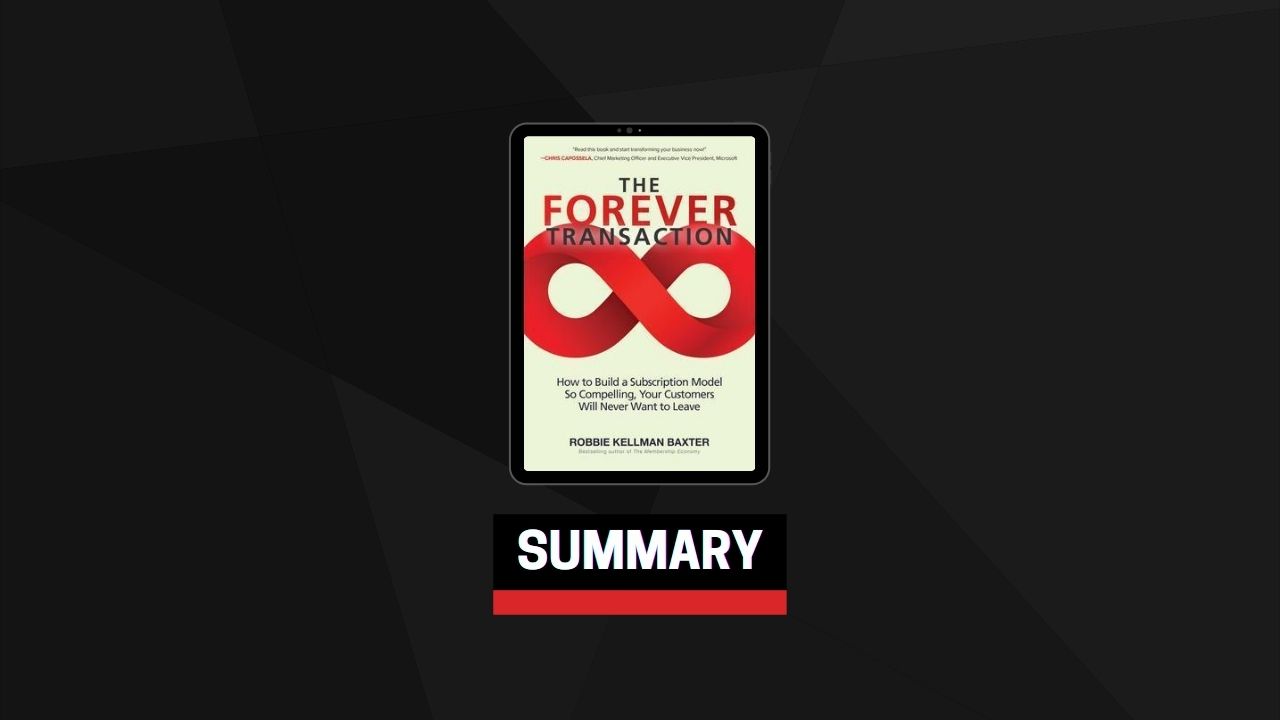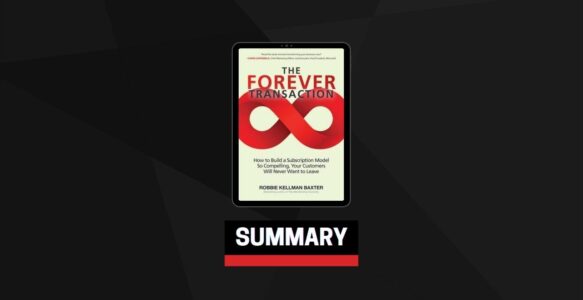Welcome to the World of Forever
If you have a business of any size that depends on sales and marketing to attract and retain customers, this book can help you bring it into the Membership Economy.
Obviously, your successful implementation of the forever transaction is going to depend on your ability to accurately understand both your internal challenges and external capacities. More than that, you are going to need a laser-like focus on defining and attracting the right customers.
Are You Ready for Forever?
Your strategy depends on how your organization is oriented in several dimensions relevant to the forever transaction. It’s not enough to implement subscription pricing. In fact, many businesses build strong forever transactions without using subscription pricing at all.
Assess your readiness and potential pitfalls in these areas:
- Leadership support (C-suite champions)
- Team lead
- Ongoing formal customer relationship
- Target customers
- Technology
- Culture
Let’s examine each element more closely and break out the diagnostic questions.
Leadership Support: C-Suite Champions
Leaders can’t just pay lip service to the strategy. They have to allocate resources and track the right metrics. No factor is more critical to your success.
Leadership Support Assessment
- Is leadership (CEO, board) committed to a membership model?
- Is leadership providing the team lead (see below) with staffing, budget, public support and executive sponsorship to assess the opportunity and implement a strategy until it’s mature and thriving?
- Does leadership prioritize long-term customer relationships and CLV over quarterly revenue and/or successful product releases?
Team Lead
Many membership models fail because the organization lacks a strategic lead who builds a big picture vision that incorporates the entire organization instead of focusing on operational tasks. Sometimes when you do one thing, it impacts your ability to take the next step—one goal depends on another. Someone must foresee those dependencies.
Team Lead Assessment
- Does the organization have a designated team lead who has a history with the company, occupies a senior level in the organization, and demonstrates strategic and creative leadership?
- Is the team lead passionate about customer-centricity and membership?
- Does the team lead have sufficient resources (budget, staff, authority) to build the business?
Ongoing Formal Customer Relationship
What’s the current status of your customer relationships? Some organizations focus completely on maximizing individual transactions. They worry they might never access this anonymous customer’s wallet again. Consequently, they upsell like crazy, even knowing the customer may experience buyer’s remorse later. At the other end of the spectrum are pure membership organizations; every member gets the full range of benefits to solve a problem forever.
Many organizations fall between these extremes. Software-as-a-service (SaaS) companies often charge customers like member organizations but don’t provide the onboarding, support, communications, or product features supportive of ongoing engagement. Many retailers and hospitality companies have points-based “loyalty programs.” These offer a reciprocal exchange of discounts and benefits for depth and frequency of purchase, with little emphasis on building an emotional connection. Then, there are customer-centric organizations with transactional pricing, whose customers return again and again and feel a sense of community.
Customer Relationship Assessment
- Does your organization have formal ongoing relationships with your customers?
- Are your products or services sold in a one-time, transactional fashion, as ongoing services, or in a contractual relationship?
- Does your pricing favor loyal and longtime purchasers?
- If you’re transactional, are there programs and processes to smooth the gap between transactions, like a loyalty program or community?
Target Customers
Your best customers are the ones you’d like to replicate and often are your most valuable customers. They pay on time, use your products well, get great value for their investment, and refer others to your organization. And because your products become habits, and are important to them, they are not price sensitive. Startup organizations can launch with a hypothesis about who their ideal customer will be, but they should evaluate their assumptions as data emerges.
Established organizations can determine who their most profitable and/or happiest customers are. Some organizations leverage this information to optimize products and services. Others only use these insights to target marketing activities. Some don’t know much about their customers; they sell through intermediaries (retailers and resellers) or run a cash business with limited data.
Target Customer Assessment
- Do you know your target customers, and, more importantly, who you best serve?
- Do you track your most valuable customers and their purchasing patterns?
- What data do you collect about your customers, whether business to business (B2B) or business to consumer (B2C)?
- Are you harnessing the power of superusers* as ambassadors, feedback sources, or new customer mentors?
Technology
Technology is key to having a forever transaction with the customer. And it requires investment. You can use workarounds in the testing phases, like having a person manually register new members or running your emails outside your Customer Relationship Management (CRM) system, but to scale, you will need to communicate, bill, support, and deliver to your customers in a frequent and flexible manner. You can’t scale up with manual processes. You must adapt to changes in hours or days, not months or years. Every person in the organization must be, if not tech-savvy, at least tech-knowledgeable.
Technology Assessment
- Will your technology support a forever transaction?
- How quickly can you alter your product delivery system or run a test on a new segment?
- How flexible is your billing system? Is it optimized for membership pricing, trial offers, and easy maneuvering among pricing tiers?
- Do your communication systems engage customers throughout their journey?
- Can members connect with each another? Community can be a key component of a successful forever transaction.
- Can you track the relationship between behavior and CLV?
Culture
Every organization claims to be customer-centric. But organizational structure often reveals the true strategy. You can find clues in the leadership background, even office decor. (What’s on the wall? IPO hardware? Old products? Customer photos and letters?) Key companywide metrics also present a window to underlying strategy. Some organizations rally around quarterly earnings, new customers, and major product releases. Others focus on “member-since” milestones, CLV, and net promoter scores.
Cultural Assessment
- How do your employees talk about customers? Are they empathetic? Do they know any of your best customers personally?
- How long has it been since your leadership team was on the front line?
- What grounds your business philosophy? Are you member-centric? Product-centric? Financial-centric?
- Where’s the power? (Hint: If it’s all with product/sales/finance, you have an issue.)
Start Small and Learn
It took Netflix years to expand nationwide in the United States, have original programming, or become available via digital streaming. LinkedIn was once just a place to easily post your résumé. Most companies, even those with the biggest promise of a forever transaction, start small. They have to.
Break down your longer-term vision for membership into small parts so you can begin making progress. Specify the steps that will get you there and whether they require research or an actual in-market product test. Each step must naturally transition into the next. It’s easier to adjust your strategy than to move forward with no strategy at all.
Communicate your Compelling Vision for Membership
Even with a green light from leadership, you must educate key people organization-wide to understand the vision and their roles in achieving it. Team members, partners, and eventual customers must be persuaded that this complex path, significant investment, and effort is justified by the outcome. Success is most likely when everyone embraces the strategy.
Articulate the compelling vision. Add images to illustrate it and, if you have them, work with your data scientists, market research, finance, and operations teams to buttress the vision with numbers. The plan won’t be exactly right—it’s unlikely even if your business is wildly successful. But it’s critical to make nebulous ideas more visceral and verify that the logic holds when all the pieces are assembled. When your colleagues can see and understand the vision of where you’re headed, they are more likely to get on board.
Learn from Early Failures
Many organizations abandon their forever journey early on because of a perceived or real failure.
Most of these failures come from a poorly designed test. If you don’t define the goals of the test (revenue vs. signups vs. engagement, for example), how will you determine if the test “worked” or not?
Even if your experiment is well defined, failure can illuminate remedial actions to get you on a right path, one you might not have expected. Try to pinpoint whether your failure is due to a communication problem, a product problem, or an execution problem.
- A communication problem occurs when the customer doesn’t understand what you’re offering or how to maximize its value.
- A product problem is when people understand your promise, but don’t feel you’ve delivered on it.
- Execution problems result when the product experience is clunky and has feature gaps.
Keep the Momentum
As your team analyzes the trial balloons, it should articulate what constitutes success and think beyond first steps. If things look good, what’s next? You may take progressively bigger steps before the entire transformation is complete or you publicly announce the strategic change.
Don’t revel too long in the success of your small experiment before pushing for the next giant step. Know before you launch your test that if it’s successful you will quickly be able to scale. There’s nothing more frustrating than a “successful” test that won’t scale, or one that lacks momentum.
Most organizations assume the rest of the world isn’t going to change as fast as their own organization will. Remember: everyone’s trying to ride that same current. If you’re pushing hard to build this new model without identifying why it’s special for the people you serve, you’re not going to stand out.
Build & Maintain a Forever Transaction
Membership is a mindset that the organization has about the people it serves. It’s about more than subscription revenue. You can’t just jump ahead and design a product without knowing who it’s for. And you can’t prioritize short-term revenue over the long-term model.
When you commit to a forever transaction, you’re focusing on the long term, and you’re making intentions transparent to the people involved. It’s meaningful work. There’s an ethical nature to forever transactions. Long-term relationships depend on candor and fit, and also on providing an exit for the ones that don’t work out. So congratulations for taking this high road to engagement, loyalty, and, ultimately, recurring revenue.
Good luck!


